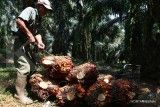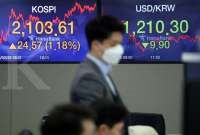ENERGY-JAKARTA. The Indonesian Biofuel Producers Association (Aprobi) believes that simplifying the types of Fuel Oil (BBM) could be a solution to boost the sales of Biofuel (BBN) bioethanol in the market.
Currently, Pertamina has been selling fuel with a 5% ethanol blend (E5) from sugarcane molasses under the name Pertamax Green 95. Pertamina projects the sales of Pertamax Green for Java Island to be around 96,000 kiloliters (KL) per year; its needs are 4.8 thousand to 5 thousand KL per year.
The Chairman of the Indonesian Biofuel Producers Association (Aprobi) Paulus Tjakrawan explained that simplifying the types of BBM will make the price of bioethanol more competitive.
“For example, if only Pertamax (non-subsidized) is sold, the price difference with the market price of bioethanol is not large,” he said to Kontan.co.id, Friday (26/1).
If compared to Pertalite which is currently sold at Rp 10,000 per liter, there is a price difference of up to Rp 3,900 because Pertamax Green 95 is sold at Rp 13,900 per liter.
Meanwhile, the price difference with Pertamax is very thin, not even up to a thousand rupiah. Currently, Pertamax is sold at Rp 12,950 per liter so the difference with Pertamax Green 95 is only Rp 950 per liter.
Read Also: Oil Prices Ease in Early trading; Set to Post Weekly Gains
Paulus further explained the selling price of bioethanol is greatly influenced by its raw material.
He explained many factors influence the price of bioethanol raw materials including season, drought, and availability in the market.
For example, bioethanol raw material from cassava. Here it will depend on its availability in the market. If the supply decreases in the market, the price immediately rises because cassava is also a food ingredient.
Another example is the raw material from molasses or sugar. This depends on the sugarcane milling season, from April to September.
Nevertheless, he still encourages Indonesia to develop its bioethanol and strives not to import.
“Speaking of potential as a tropical country, Indonesia certainly has a large potential from various sources of raw materials. Not only sugar/molasses, cassava, and corn, but also sorghum, palm, sago, cellulose, and others,” he explained.
Read Also: Oil Prices Ease in Early trading; Set to Post Weekly Gains
He believes the use of bioethanol can increase the octane of fuel so its emissions are lower and reduce BBM imports. However, it does not stop there, Aprobi states that the government must take into account more about the availability of raw materials, costs, technology, and selling value.
According to data from the Ministry of Energy and Mineral Resources, the current production of bioethanol in Indonesia is 40,000 kiloliters in 2022 and will be increased to 1.2 million kiloliters in 2030 which is the potential for a BBM-type gasoline mix. This is based on a study conducted in Brazil, the energy produced from 1 ton of sugarcane is equivalent to 1.2 barrels of crude oil.
A little flashback, bioethanol has been researched in Indonesia since the 1980s by the Agency for the Assessment and Application of Technology (BPPT), Bandung Institute of Technology (ITB), and others. Then around 2006, bioethanol began to be used for gasoline mixtures.
Pertamina uses 1%-2% ethanol in the Malang and Bali areas then Jakarta. However, its production is very small from Molindo Raya Industrial, Lawang Malang with molasses as raw material.
Finally, this activity stopped in 2009 because the economic price of bioethanol did not match Pertamina's purchase price to buy it which was adjusted to the subsidized gasoline price.
/2011/11/30/375470808p.jpg)









